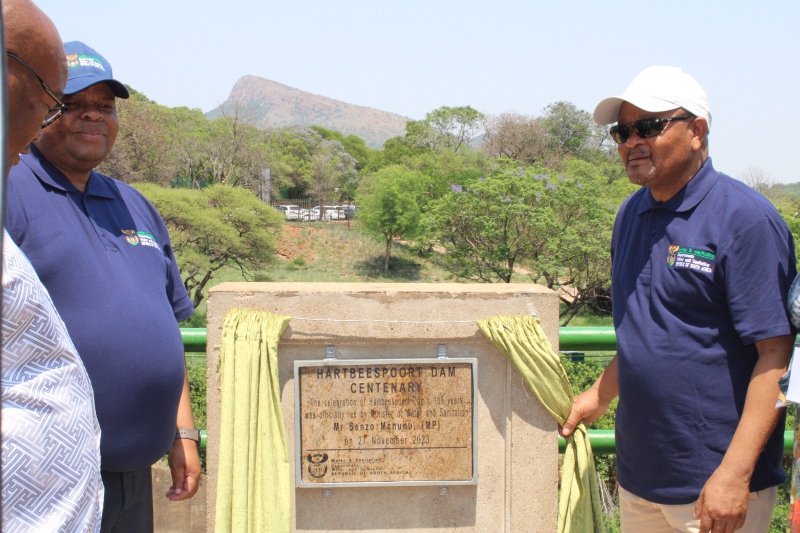
The Department of Water and Sanitation Minister, Senzo Mchunu, has made assurances that the department, along with its entity in North West Province, Magalies Water, are working tirelessly to ensure the efficient rehabilitation of the Hartebeespoort Dam. The dam was affected by hyacinth and algae, and thus negatively impacting on the water quality of the dam.
"We are aware of the hyacinth at the dam, and thus very concerned. It is for this reason that we have appointed our entity in North West, Magalies Water, for three years to develop and implement a programme that will deal with the invasive plant and the algae that are infesting the dam," said Mchunu.
Mchunu was speaking during the centenary celebrations of the dam on Monday at the Oberon Eagle Waters Resort, where he led a community engagement, along with senior officials from Magalies Water and Madibeng Local Municipality. The municipality also provided an update on the work which is being carried out to clear the hyacinth from the dam.
Magalies Water has since developed a Bio remediation Plan comprising interventions which include, the profiling and fingerprinting of problematic contaminants in the dam, removal of floating plants and debris from the dam to enhance the aesthetic value and allow for biogeochemical processes, as well as the implementation of the remediation technology to restore the dam's ecological services.
While addressing hundreds of people at the event, Mchunu stressed his commitment to overseeing the effective implementation of the Bioremediation Plan. “I want to ascertain our commitment that we have indeed rolled up our sleeves to completely rehabilitate the dam. We also want to thank the organisations that continue to help out in any way they can and continue to hold us accountable for the work that we have been brought into the office to do. We all have a responsibility to ensure that the county's water infrastructure is safeguarded," Mchunu pointed out.
He further reiterated the ministry’s stance on the need to strengthen and enhance strategic partnerships in the sector, which are aimed at resolving water quality challenges of Hartbeespoort Dam, including issues of solid waste and water pollution in the dam. “I would therefore like to encourage all civil society organisations to work together with us, as we work towards rehabilitating the dam,” he added.
Hartebeespoort Dam marked its 100 years of existence in September this year. The centenary celebrations are aimed at increasing the awareness of integrated water resource management and water quality as well as enhance relations between government, private sector, and the community towards ensuring effective integrated water resource management in and around the dam.
The dam was constructed in 1921 and commissioned in 1923. The primary purpose of Hartbeespoort Dam is to provide water for irrigation. Roughly, 80 percent of water is used for irrigation and the remainder is used for domestic consumption and compensation flows. The dam itself and the surrounding area currently offer tourism activities such as recreational boating, angling, mountain sports and a variety of other activities such as hiking, ballooning, hang-gliding, parasailing and abseiling.
The centenary celebrations were held in partnership with the departments' entity in North West, Magalies Water, the provincial government and several other organisations such as the North West Parks and Tourism Board, South African Resource Heritage Agency as well as Magalie-Biosphere, amongst others.


